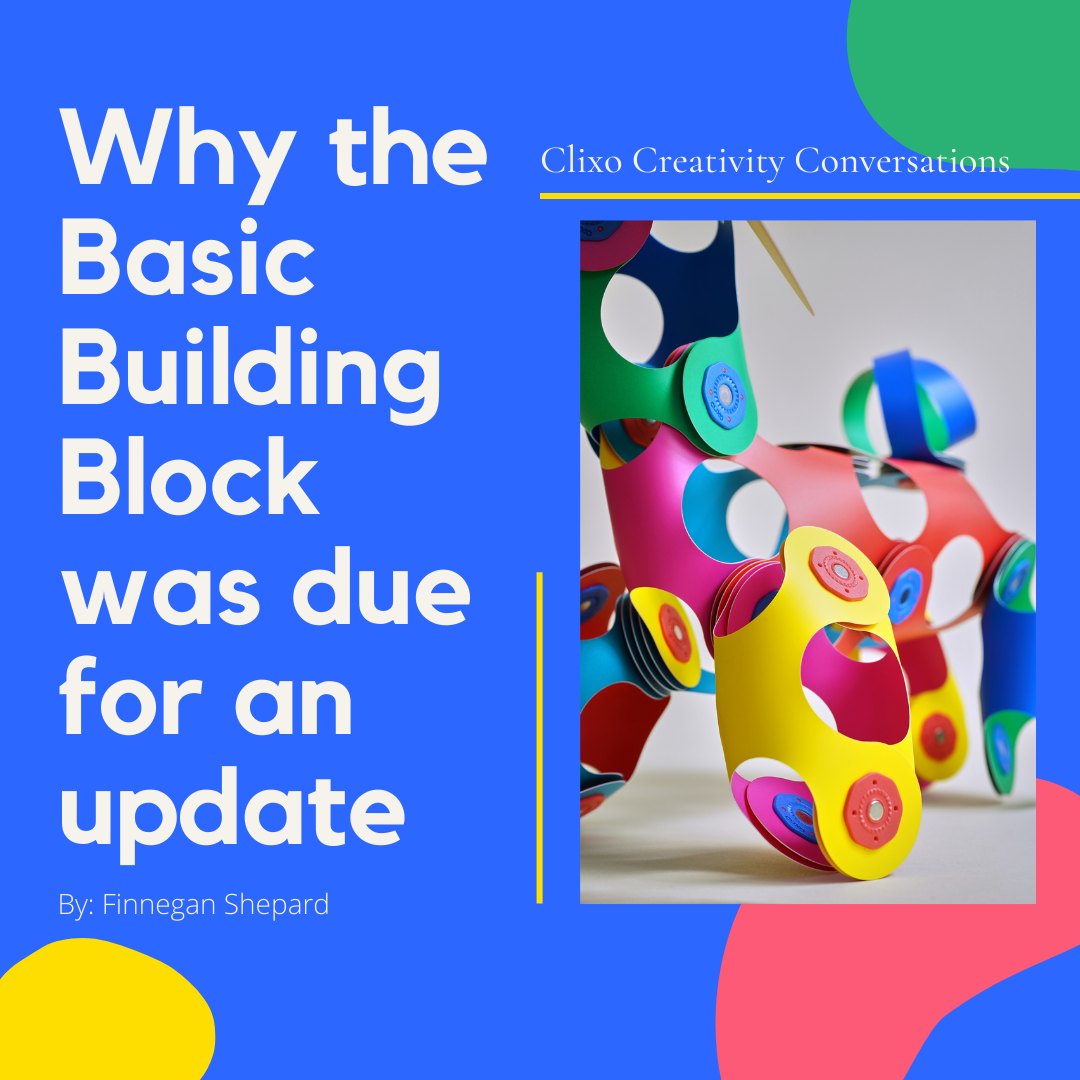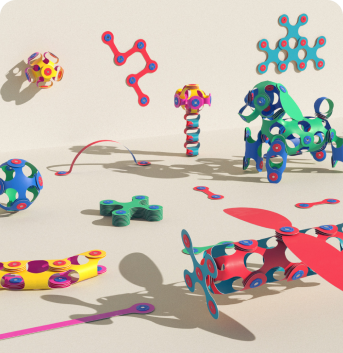Why the Basic Building Block was Due for an Update

Our world used to be a lot more square. There are good reasons for this. Squares are easy to build with, and structurally sound. With the rise of industrialization and the possibility of mass producing simple shapes, squares were a no brainer, and they dominated much of the design world for a lot of the 20th century. Think modernism, but also think Lego: no shape has historically screamed building block more than the iconic Lego brick.
But we’re not in the 20th century anymore, and we don’t live, think, or play the same way, either. Integrating more naturalistic shapes into everything from architecture to footwear has become the norm, and yet much of the toy industry is still stuck either within geometric shapes, or prefabricated figures.

That’s why our founder, Assaf, set out to design the basic building block with a modern twist. He knew he needed to answer the desires, intuitions, and lifestyle of play time (and parenting) in the 21st century. That meant a lot of things. It mean that the toy had to compete with the ever-alluring pull of screen time, it needed to be simultaneously accessible and challenging for kids at a variety of developmental levels, it needed to push back against the modern pressure of perfectionism and checking boxes, it needed to encourage maximum creativity and self-expression, it needed to help kids learn in a fun way, and it needed to suit the on-the-go demands of modern parenting.
It was a long list–it’s no wonder it took over a thousand prototypes to come up with Clixo. But after two years of tireless experimentation, Clixo was born, ushering in a whole paradigm shift in building block toys. Don’t believe us yet? Let’s break down the anatomy of Clixo:
If you take a moment to add all of these differences up, the picture of what play with a traditional building block versus play with Clixo looks like is fundamentally different. ‘Old school’ play tended to happen in set areas (a living room, the basement), with a huge bin of plastic blocks dumped out and built into standard, square-based shapes. Sometimes these creations were left out to collect dust on a shelf, sometimes they broke apart and scattered (only to elicit howls of rage upon getting underfoot), and sometimes they were thrown back into the box.
With Clixo, the picture’s a little different. Maybe your kid is building a dragon in the backseat as you roadtrip across the country. Maybe they are sticking an amorphous, as-of-yet undefined shape to the refrigerator, or the slide at the park. Maybe they are snapping it back into its easy-to-store form and throwing it in their backpack before they go to meet a friend, or maybe they’re turning Clixo pieces into the bag itself! Flexible, lightweight, easy to stack and store, and with infinite possibilities and ways of engaging with the environment around it, Clixo truly is the building block of the future.
In a world that increasingly breaks down boundaries and requires rapid adaptation to new normals, it’s important to arm our children with toys that can keep up. That’s why Clixo has been designed to suit our modern needs. It’s more than just a toy. It’s a tool of creativity.
By: Finnegan Shepard

